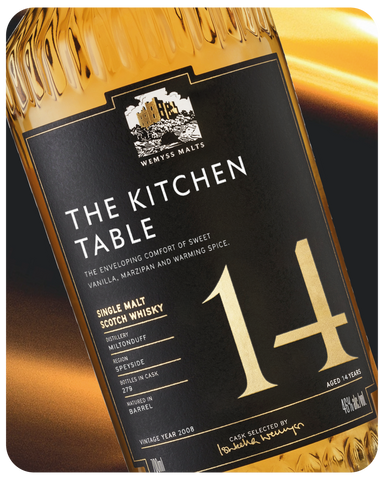
What exactly is 'Scotch Whisky'?
The whisky industry is full of language and jargon that sometimes needs to just be said in, well, English! But before we delve into the different scotch whiskies you can find, however, there are a few basics to cover. To qualify as 'Scotch Whisky' the liquid must be distilled and matured in Scotland, in oak barrels under 700l and for no less than 3 years and a day. Upon bottling the whisky cannot be below 40% alcohol by volume (ABV).
So here are the five main scotch whiskies you will see:
Single Malt Scotch Whisky
This is the king of whiskies, and is protected heavily under regulation to retain quality and clarity. The rules are as follows: the whisky must be made using water, yeast and malted barley exclusively, be from one distillery and it must be distilled using only copper pot stills.
Tweaks to change the outcome of the character and taste can occur anywhere from choosing the yeast strain to altering the angle of the lyne arm (more on that in a later blog...).
The Wemyss Malts Single Cask releases are all Single Malt Scotch Whiskies from some of the most sought after distilleries in Scotland. They range in flavour and character and offer an insight into how age, location and wood type can impact the final spirit.
A big hit that this editor can't get enough of is our newly released 14 year old Miltonduff called 'The Kitchen Table'. It releases a comfort of sweet vanilla, marzipan and warming spice.

Blended Malt Scotch Whisky
This whisky genre must be comprised of more than one Single Malt Scotch Whisky and so by proxy have liquid made only from malted barley, yeast and water. The whiskies that are blended to make up this whisky cannot all be from the same distillery either.
Think of this as just a mixture of single malts: if you were to mix a 15 year old Auchroisk with a 28 year old Bunnahabhain you in essence have created a Blended Malt Scotch Whisky. Though we certainly would not advise it! Blended whisky of any sort is an artwork and getting the balance right takes years of practice and finesse.
A Wemyss Malts hit from this editor includes our new release Nectar Grove which has been blended and matured in ex-madeira wine casks producing a sweet and succulent expression.

Single Grain Scotch Whisky
There are two distinct differences that set a Single Grain from a Single Malt. The first is that other cereals like maize and wheat can be used in the production process and the second is the method of distilling. In Single Grain whiskies, continuous distillation (using column stills) is allowed as well as the use of pot stills.
As a result of the increased flexibility in production, grain whiskies are usually slightly cheaper and because they can be continuously distilled, are often made in much larger quantities than malt whiskies.
We have a 31 year old Invergordon called Caramel Pecan Swirl that is a Single Grain Scotch Whisky. It begins with sugar coated cashews before moving onto a more creamy sweetness, and ending on rich caramel. A rare find and quite the bottle of Scotch!
Blended Grain Scotch Whisky
Like a Blended Malt, Blended Grain whiskies include more than one Single Grain Scotch Whisky that have been blended together to create a different expression. In addition, the whiskies must be from different distilleries.
Blended Scotch Whisky
This is the most commonly produced blended whisky and is comprised of, at a minimum, one single malt and one single grain. The whiskies, again, must be from numerous distilleries as well.
Using both grain and malt whiskies means that the master blender can bolster their liquid normally with the grain whiskies while adding finesse, punch and character with the addition of single malts.
Our Lord Elcho Blended Scotch Whisky is a great example of this balance being achieved to create a full yet soft whisky. And with a minimum of 40% malt content (meaning 40% of the liquid is made up of single malts, very high by industry standards) at a very reasonable price, it is certainly not one to miss

I hope this has at least given you a run down of the different Scotch whisky genres and perhaps spurred you into buying one or two to try!
